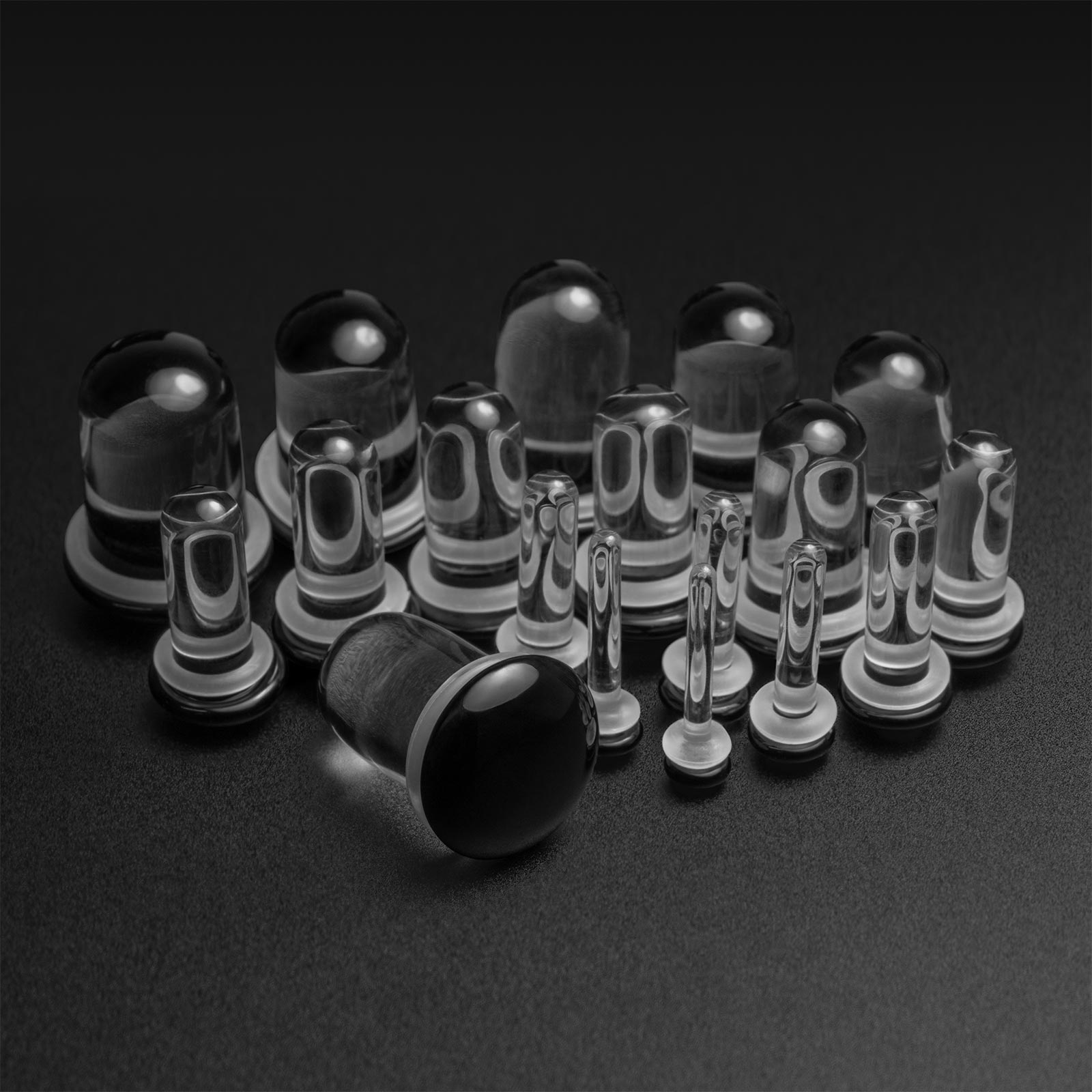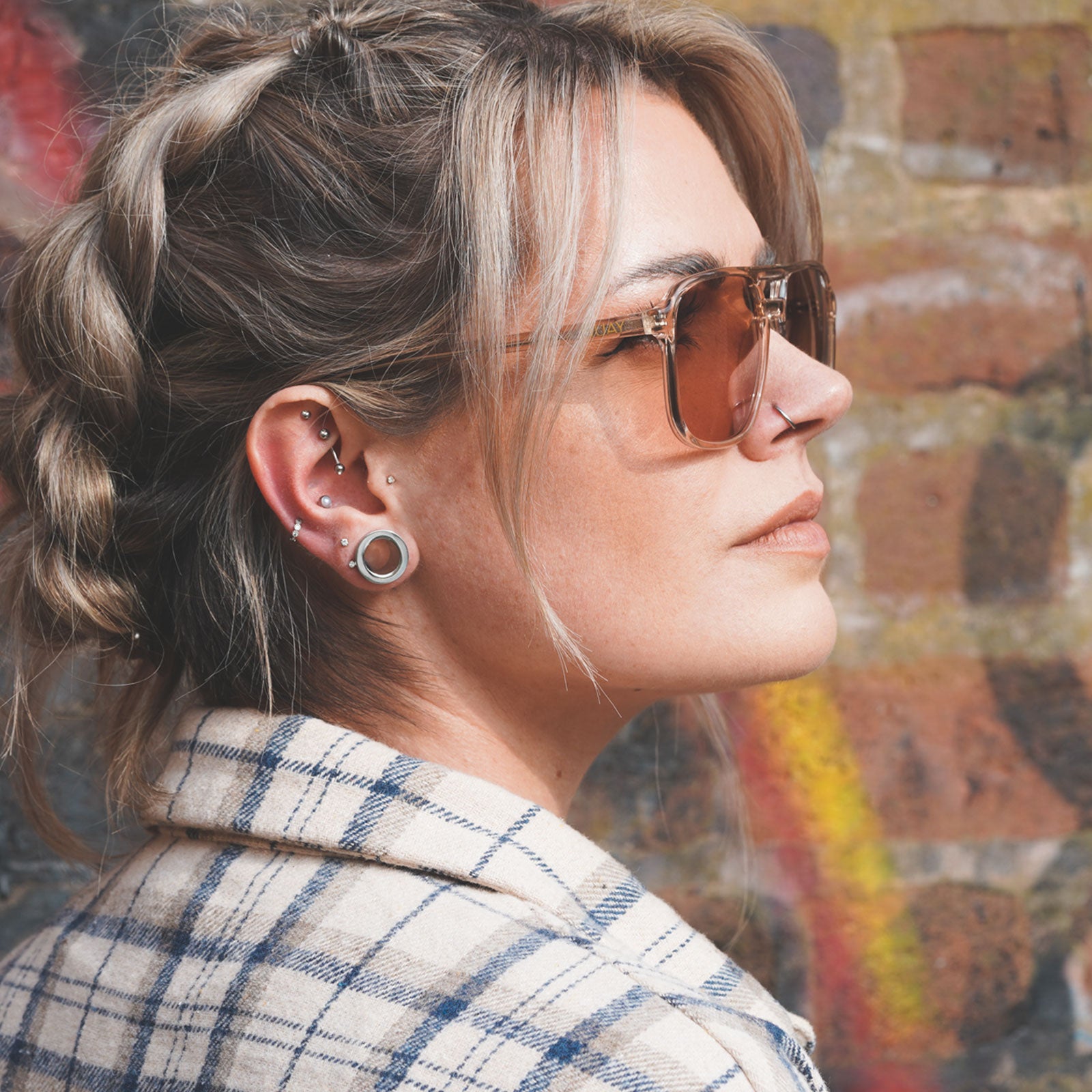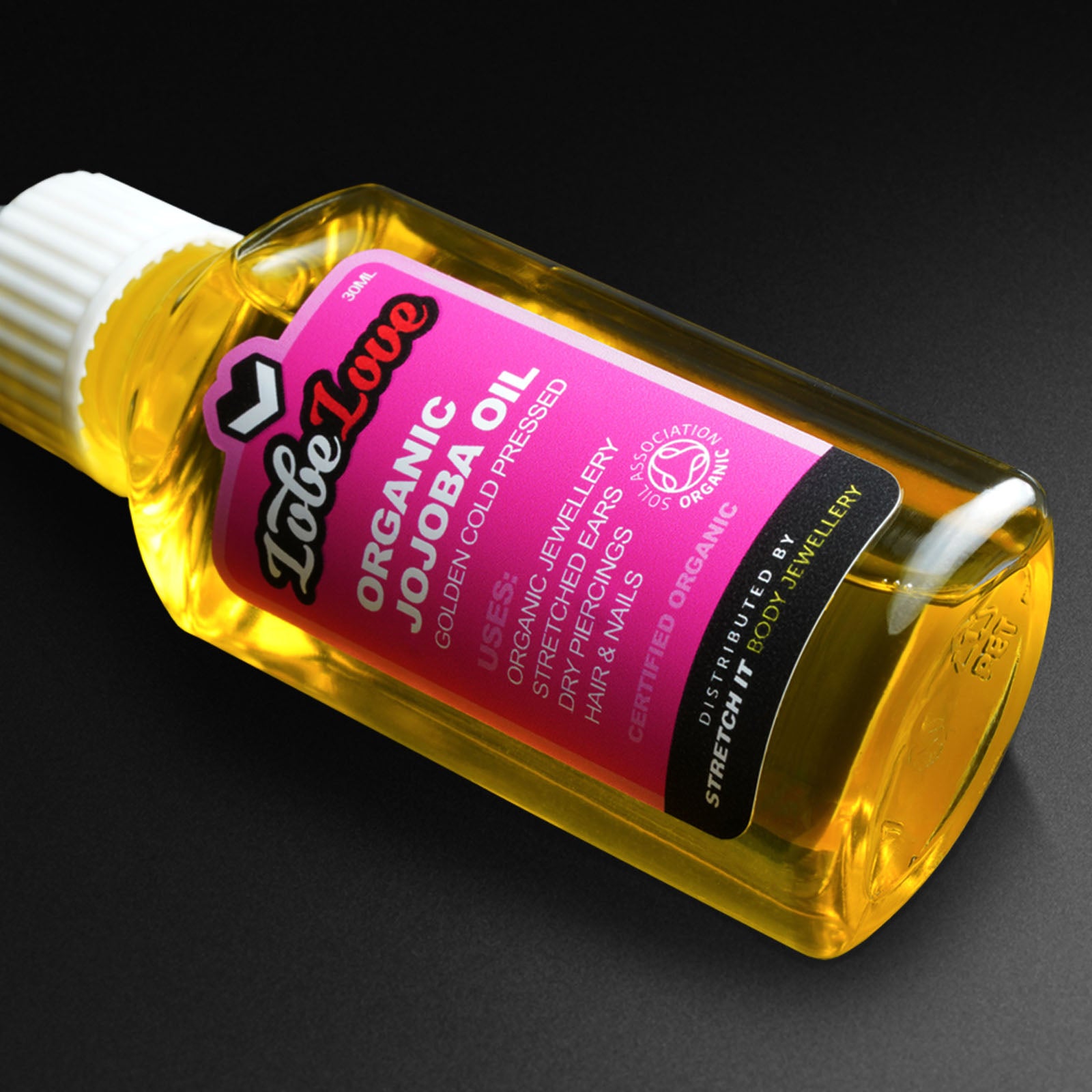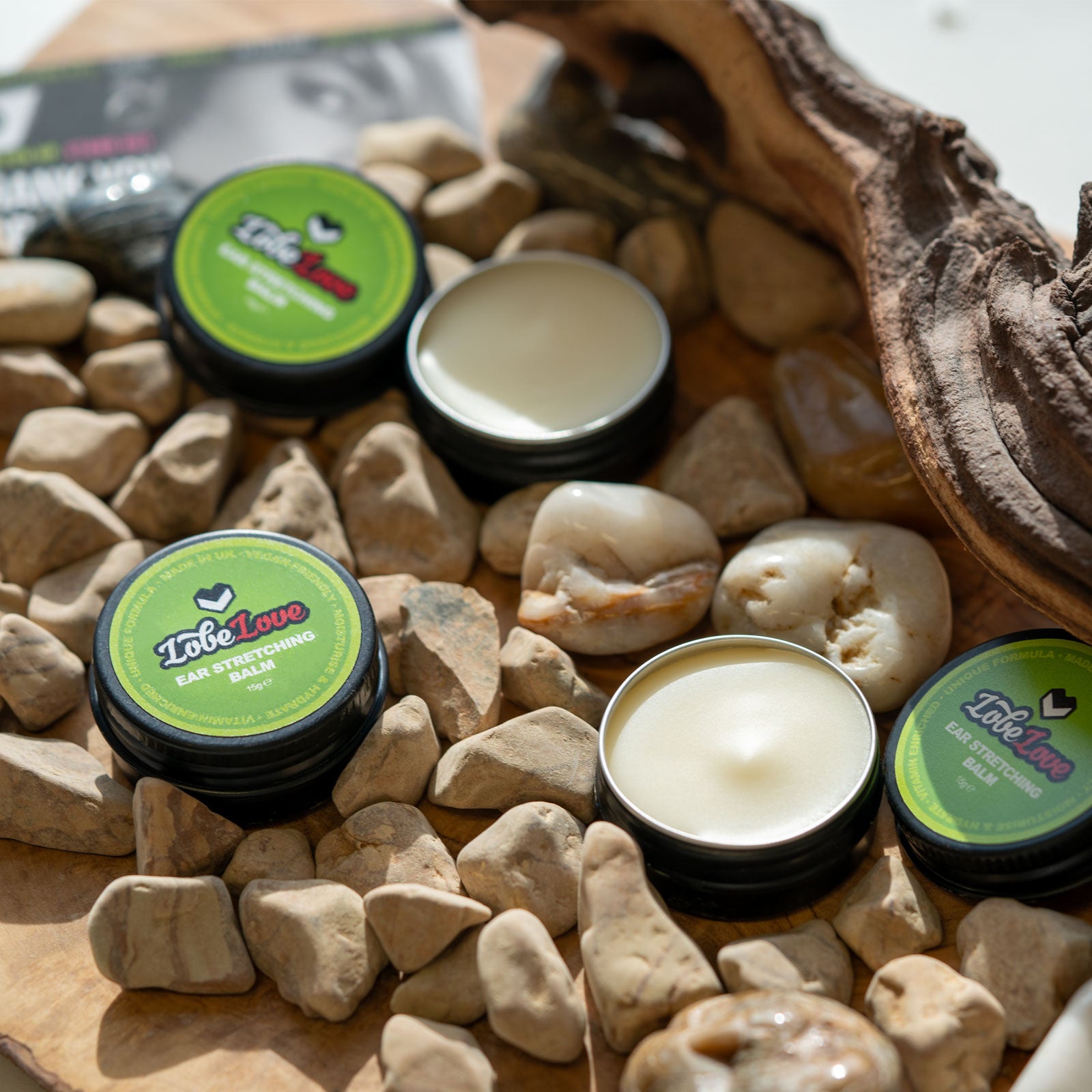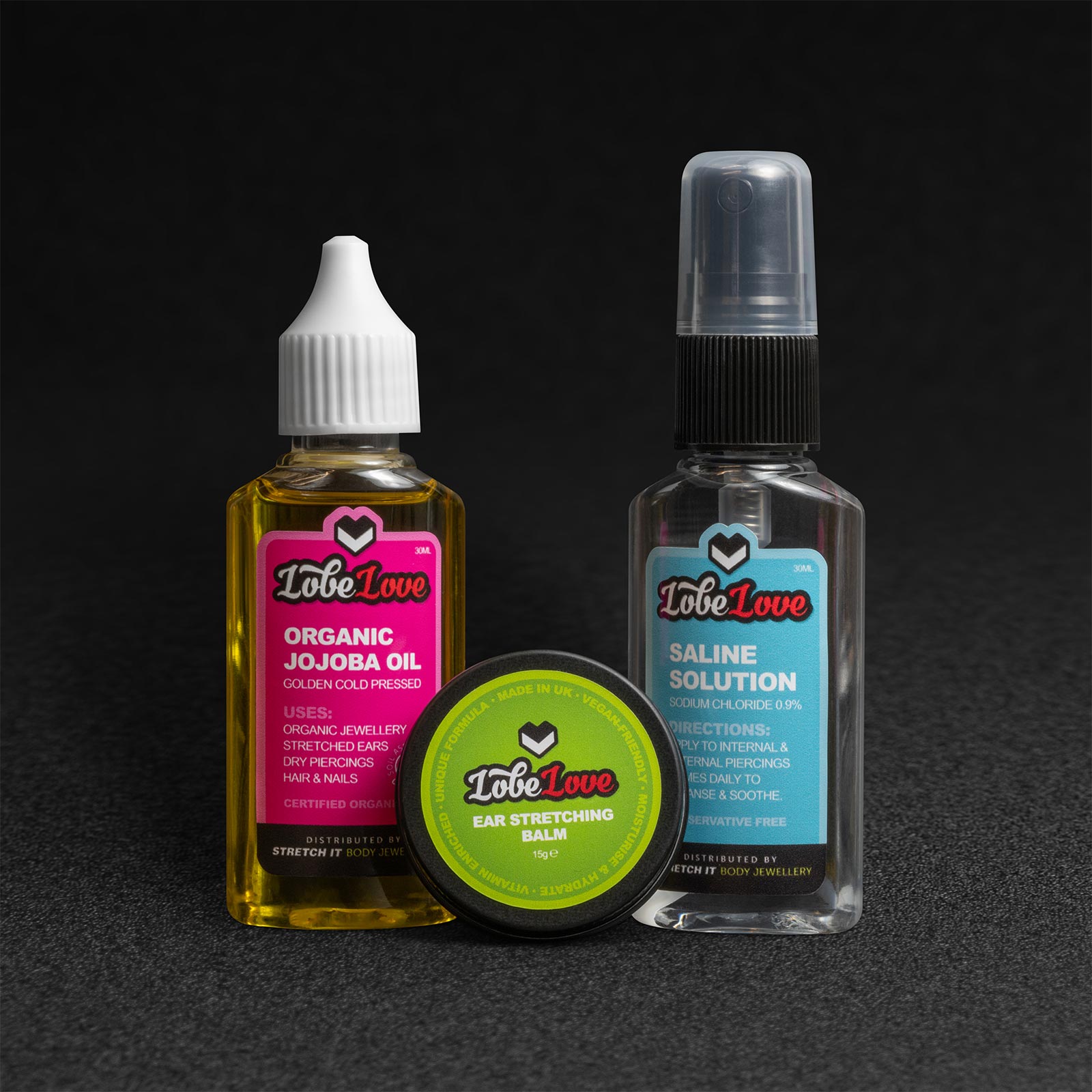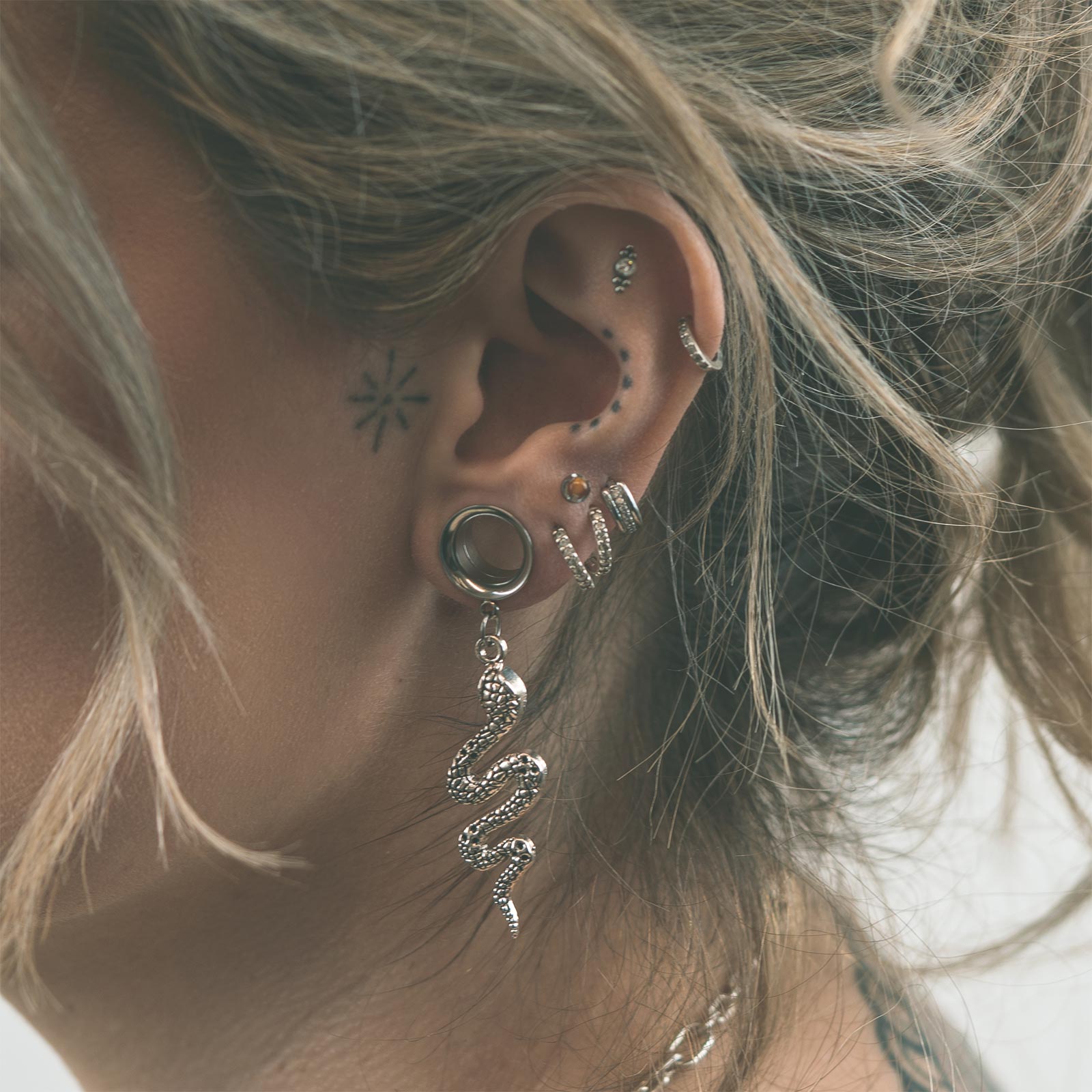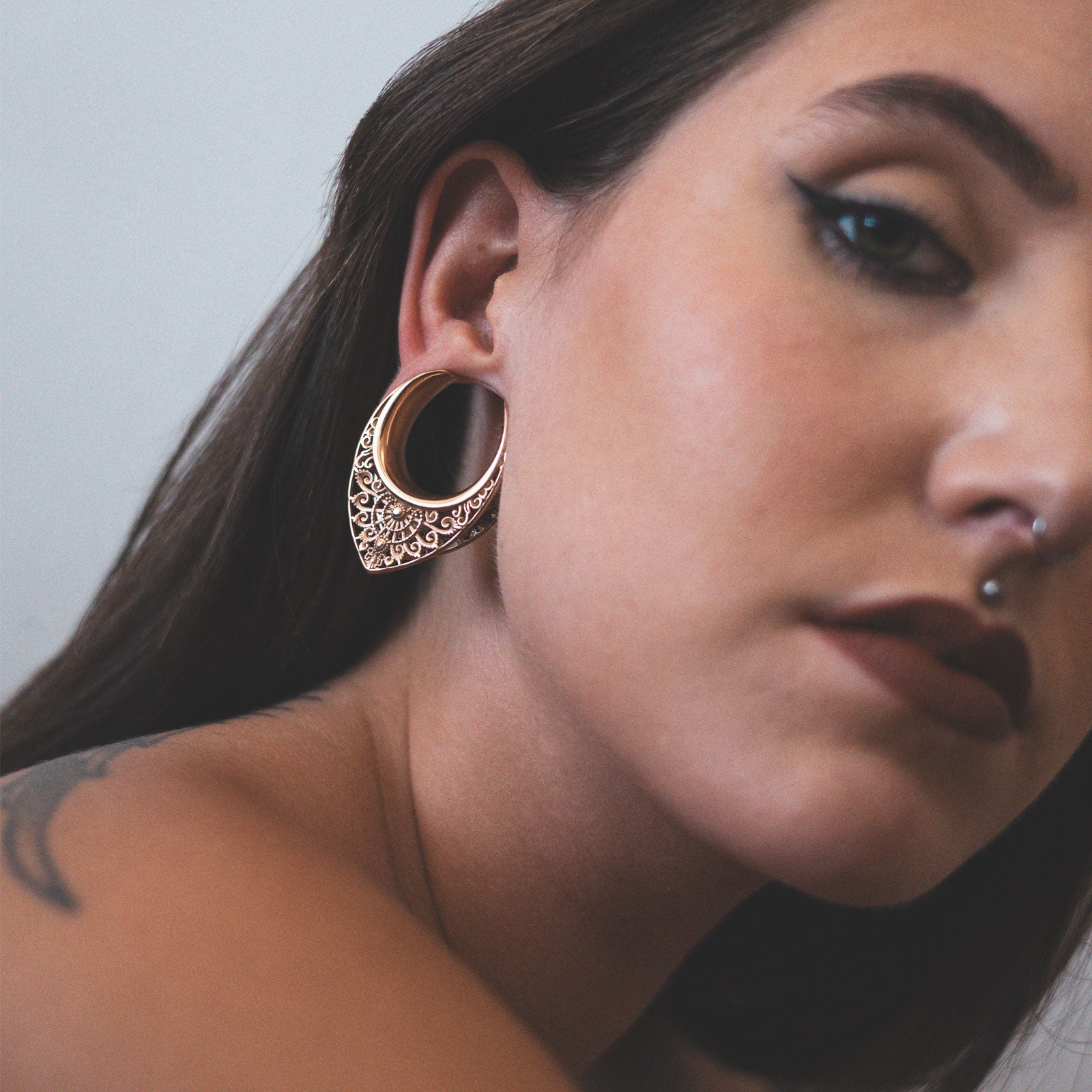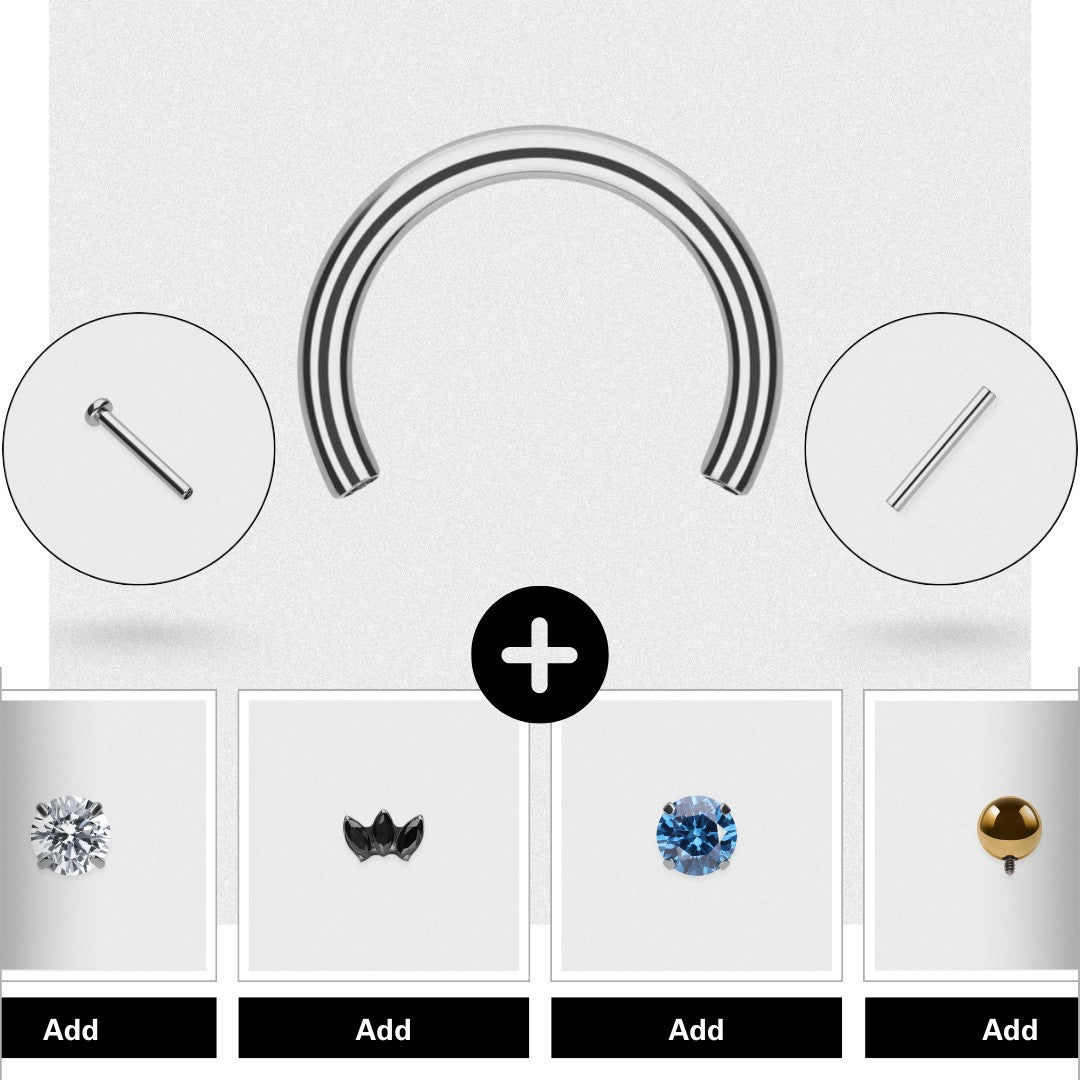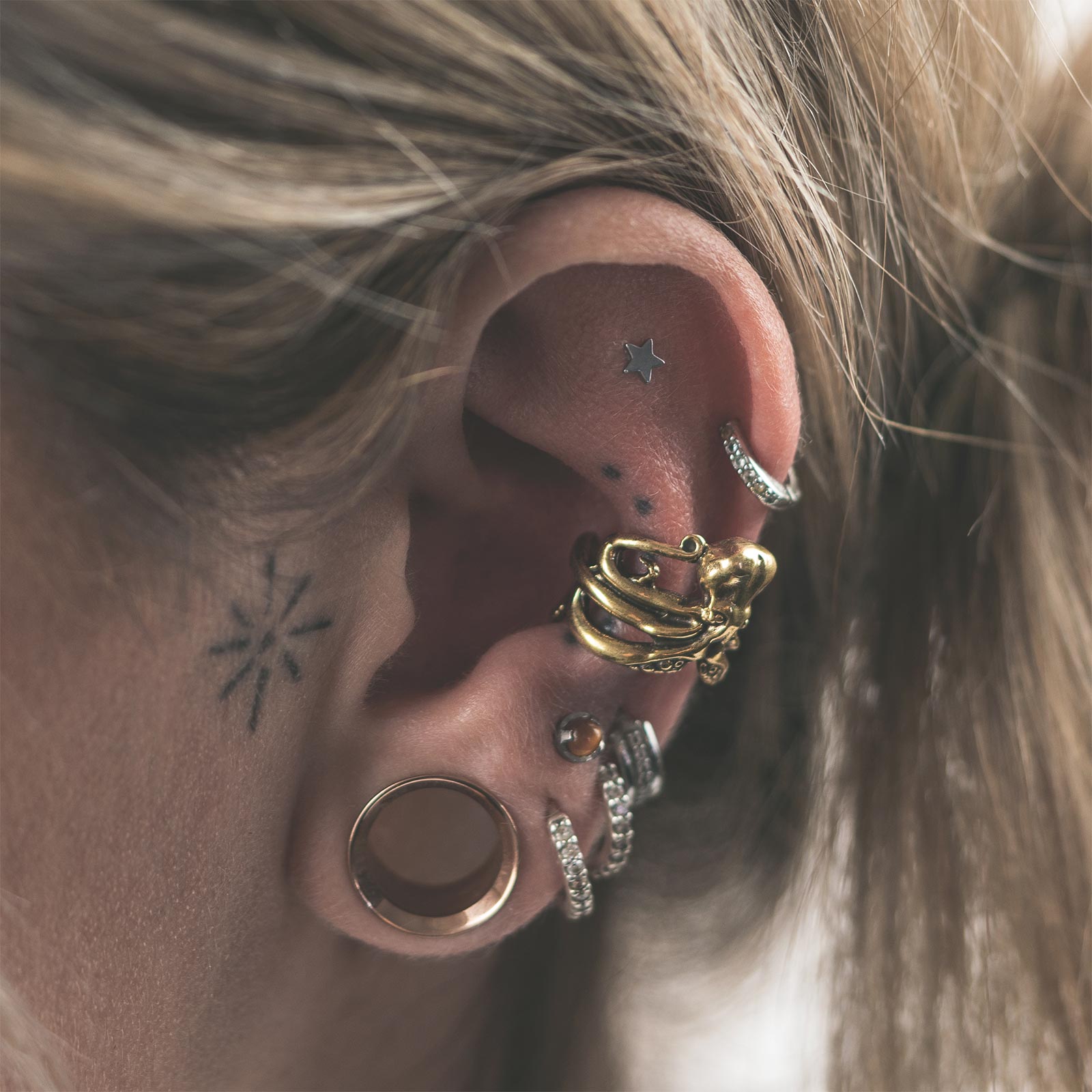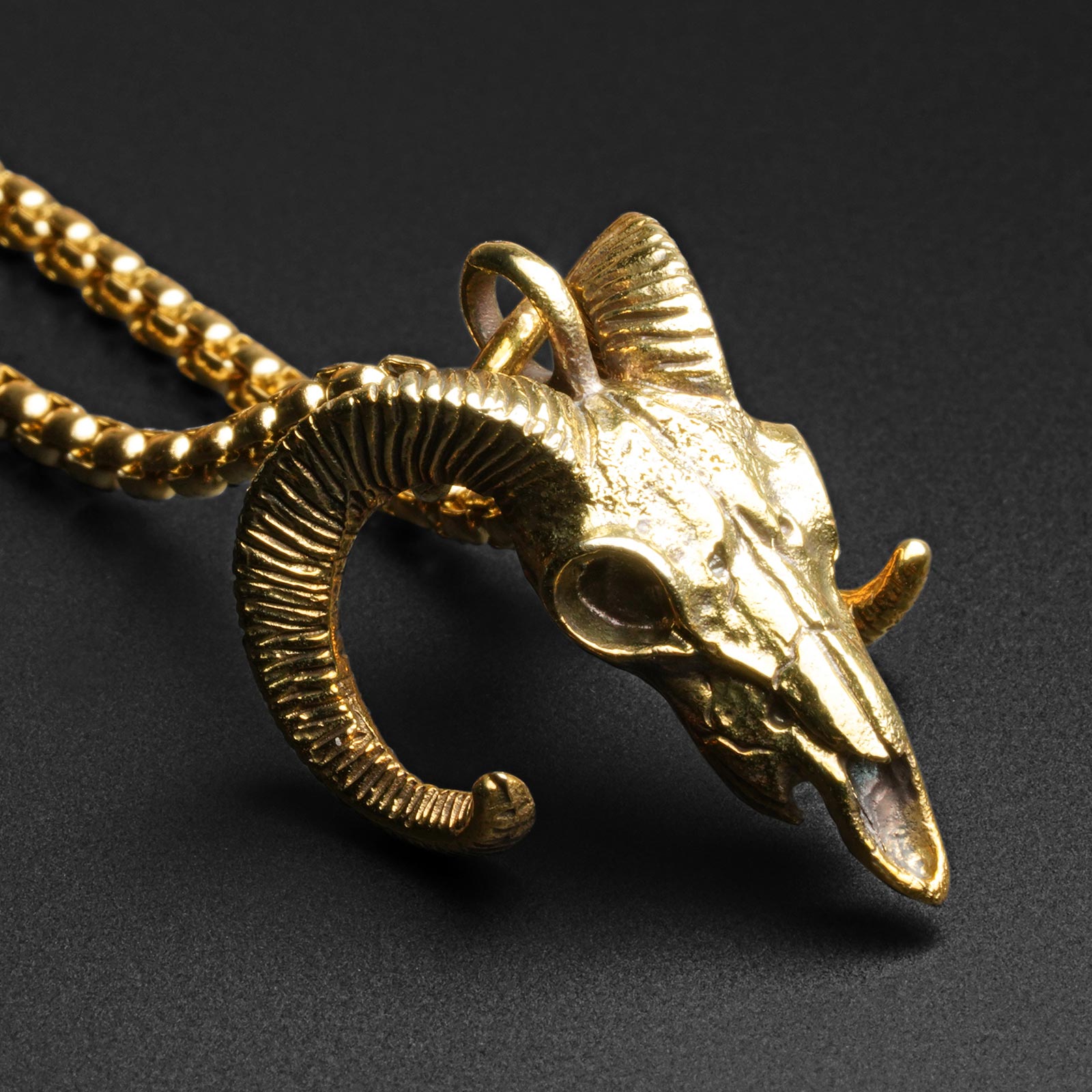"Wintertime ear stretching isn’t impossible. It just requires extra care and smarter choices to keep your lobes moisturised, warm, and protected."
The winter causes a frosty dilemma in the ear stretching community. Why? Well, there’s more to the snappy season than cosy blankets, hot drinks, and Netflix marathons in terms of stretching your ears. In comparison, it’s a time of high stakes lobe care for stretched ears in the winter. And if you’ve never really considered the seasonal impact on your ear stretching journey, you might want to think again.
The thing is, your stretches can quickly deteriorate due to factors like:
- Cold air
- Low humidity
- Drastic temperature changes
And the painful (literally!) truth is you might find yourself dealing with dry, cracked skin, blowouts, frostbite, and even the loss of a lobe (in a few extreme cases) If you don’t protect them.
But don’t panic! Stretched ears in the winter are totally manageable as long as you’re smart about it. And in this article, we’ll cover all the ‘need to know’ stuff about keeping your stretched lobes safe, comfortable, and looking great, no matter how icy it gets outside.
Discussed In This Post
Ear Stretching and Winter Weather: Know Your Enemy
Ear stretching and winter weather don’t exactly work hand-in-hand together. So, you need to give your stretched lobes a bit of extra help when the weather starts taking a turn for the worse.
Cold climates (and hot ones too, but that’s another story for another day) can wreak havoc on the skin in general. And you can x10 its potential impact when you’re an ear stretching enthusiast.
Here are the main reasons why:
Dry, cold air strips your skin’s moisture
Your skin’s elasticity is everything when it comes to stretching your ears. But in winter, cold air + low humidity = moisture loss. As a result, your lobes can become dry, tight, and prone to cracking. Furthermore, the act of ear stretching in the winter can be painful and even cause microtears without proper hydration. This will set your progress back, because you’ll have to switch focus to the rest and recuperation for your lobes instead of your next stretch up.
Dramatic temperature changes wreak havoc
Walking from the freezing cold into a heated room might feel all snuggly and warm. But your lobes don’t agree. This rapid temperature shift can cause swelling, irritation, and temporary tightness. Plus, it means fresh ear stretching in the winter is more likely to involve discomfort.
Metal jewellery as cold as ice
Ever touched a metal doorknob in winter? Imagine that, but on your lobes. Metal conducts cold quickly, meaning metal ear plugs and tunnels can literally sap heat from your skin. In turn, this increases the risk of irritation.
The risk of windburn and frostbite is real
Extreme cold combined with wind exposure can chafe, dry out, and crack your lobes. In addition, exposed skin can get frostbitten in freezing temperatures. And your ears are no exception. In fact, they’re at high risk, because they protrude from your body. So, get inside immediately and gently warm your lobes through if they go numb.
Decreased blood circulation to stretched ears in the winter
Your body prioritises keeping your core warm in the cold. This means circulation to extremities (including your lobes) slows down. And reduced blood flow means slower healing, less elasticity, and an increased risk of irritation and tears. It’s definitely worth pausing for thought until the weather improves if you’re thinking about ear stretching in the winter.
Should You Do Ear Stretching in the Winter?
It’s the question you’re dying to ask. And the answer is yes. But only if you’re extra careful.
Ear stretching during winter is totally doable. But it’s not the time to rush. So, use your common sense and ease off if your ears are dry, irritated, or struggling with the cold. They’ll still be there – hopefully fresh stretch healthy – when spring comes around.
Otherwise, there are three telltale factors suggesting you might want to avoid stretching your ears in the winter. So, put it on ice (pun intended!) if any of the following apply to you and your ears:
- Your lobes are already dry, cracked, or irritated.
- You’ve recently stretched and your lobes are still healing.
- You spend long hours outdoors in extreme cold.
But whatever you do, don’t stretch in freezing temperatures! And if you go ahead with ear stretching in the winter, do it indoors in a warm, humid room (like your bathroom after a shower).
At the end of the day, try not to just press on with freshly stretched ears in the winter just because you feel like it. You could be inviting unnecessary self-inflicted problems. It’s far safer to leave it till your skin is more elastic and less prone to tearing.
But if you feel like your lobes are happy and hydrated enough go ahead? Take some crucial precautions and ramp up your aftercare routine to safeguard your newly stretched ears in the winter.
Winter-Proof Your Stretched Ears

Hydration is everything. And if there’s one thing you do this winter, let it be keeping your lobes hydrated with the best oils for ear stretching twice daily to prevent dryness and cracking.
And there’s more! Because daily ear massages with oil help improve your circulation when the blood flow to your extremities slows down in winter. This helps boost elasticity and healing.
The best oils for ear stretching on the market today are formulated by ear stretching experts to meet the specific needs of the ear stretching community. The most wildly popular and effective option around is this:
LobeLove™ Organic Golden Jojoba Oil - Jojoba oil is a must-have for good reason when it comes to stretching your ears. It mimics your skin’s natural sebum, helping to:
- Restore elasticity
- Prevent dryness
- Promote healing
For all these reasons, daily massages with jojoba oil strengthen, nourish, and thicken your lobes, whether you're maintaining your current size or prepping for your next stretch.
This premier product delivers pure goodness. It’s sourced from 100% pure, Soil Association-certified organic jojoba, cold-pressed and packed with skin-loving nutrients to keep your lobes hydrated, supple, and ready for stretching.
You’ll get precision without waste, thanks to its mess-free drip top applicator. And did we mention it’s also vegan and cruelty-free?
Swap Metal for Winter-Friendly Jewellery Materials
Your choice of jewellery matters, especially when there’s a nip in the air! So, you’re wise to avoid metal, stone, and glass, which can get painfully cold and sap heat from your lobes.
Instead, go for insulating, warm materials like:
Bone and Horn (if ethically sourced)
Both of these natural jewellery materials stand out as classics for their breathability, timelessness, biocompatibility, skin-friendliness, and warmth for stretched ears in the winter – or at any time!
You’ll discover some truly unique handcrafted belters, whether you prefer the deep, intense tones of horn or the soft, ivory-like smoothness of water buffalo bone.
But they’re natural and porous. So, they’re fine for ensuring your existing stretches aren’t left out in the cold. But a no-go area for fresh ear stretching in the winter.
Silicone
Silicone jewellery is an ear stretching fan favourite for its soft, flexible, comfortable, lightweight, and versatile designs that don’t succumb to the winter chill.
Its massive range of colours, from classic monochromes to vibrant neons and swirls, are great for switching up your look with ease without weighing your lobes down.
But silicone shouldn’t be used for fresh stretches, even though it’s ideal for healed lobes. Its grippy texture can stick to healing skin, causing irritation. Never a good look in winter or any season!
Wood
You could call wood nature’s top tip for stretched ears in the winter, thanks to its ability to retain warmth and prevent moisture loss. Plus, it’s lightweight, breathable, and kind to your skin, reducing irritation and keeping your lobes happy all day long. All these qualities make wooden plugs and tunnels a must-have when you’re serious about style, comfort and safety.
What’s more, there are some sick designs to add to your collection, from the light, smooth finish of crocodile wood to the rich, deep tones of sono wood.
Wood isn’t suitable for fresh ear stretching because of its porousness. But it’s the bomb for existing stretches.
Whatever materials you choose, it’s a good idea to avoid heavy jewellery that pulls on dry skin. As you can see, stretched ears in the winter are less elastic. And heavy plugs can make it worse. So, stick to lightweight materials. Even think about temporarily down-sizing if your lobes feel irritated.
Cover Your Ears
It might sound obvious, but keeping your ears covered is the easiest way to protect them. So, make sure you’ve got at least one of these ear stretching winter wardrobe essentials before stepping outside:
- Wear a beanie or winter hat - check these out!
- Wrap a scarf over your ears.
- Use earmuffs for extra insulation.
Modify Your Cleaning Routine

Harsh winter air already dries out your lobes. So, don’t go making it worse with over-cleaning. Stick to gentle, non-alcohol-based, hydrating cleansers to retain moisture without stripping natural oils.
In fact, look no further than this beauty:
LobeLove™ Professional Saline Piercing Spray - This gentle mist is made with pure, professional-grade saline (0.9% sodium chloride) and completely free from preservatives and alcohol. It’s your NBF for stretched ears in winter, helping you to:
- Flush out impurities
- Soothe irritation
- Support healing
Better still, its handy 30ml non-aerosol spray bottle has got you covered during your works do, your Boxing Day walk, or just battling through bad weather to get from A to B. Simply mist and let it do its thing! It’ll keep your lobes clean, hydrated, and irritation-free, whether you’re maintaining your latest ear stretching effort or dealing with a problematic stretch.
Most Common Winter Stretching Issues - and How to Fix Them
Here’s a quick at-a-glance recap of what to expect, if you’re facing your first winter as a fully-fledged member of the ear stretching squad, or if you’re actually ear stretching in the winter:
Dry, Flaky Skin
Problem - Cold air stripping moisture.
Solution - Apply the best oils for ear stretching morning, night or as required (because there’s no such things as over-oiling).
Swollen, Puffy Lobes
Problem - Rapid temperature shifts causing irritation.
Solution - Avoid metal jewellery and massage your lobes daily with the best oils for ear stretching.
Frostbite or Numb Lobes
Problem - Prolonged exposure to extreme cold.
Solution - Get inside, warm them up gently, and apply the best oils for ear stretching without delay.
Blowouts from Dry, Tight Skin
Problem - Stretching your ears too fast in winter. The need for speed is always an issue. But it carries many additional risks in cold weather.
Solution - Slow down, use smaller increments, hydrate well with the best oils for ear stretching, and see your GP if it feels painful.
Final Thoughts About Stretched Ears in the Winter
Wintertime ear stretching isn’t impossible. It just requires extra care and smarter choices to keep your lobes moisturised, warm, and protected. This applies whether you’re a new or a seasoned stretcher. Either way, you’ll be wanting to sail through the cold months without any issues.
At Stretch It Body Jewellery, we’ve got the best oils for ear stretching, jewellery ranges, and aftercare products your lobes will love you for.
Check them out here for happy, healthy ear stretching, whatever winter throws at you!
Subscribe To Our Awesome Mailer
No spam. Just discounts, exclusive promotions and ear stretching tips & tricks you won't want to miss.


